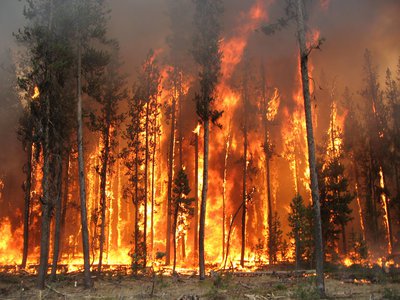Forest Fires and Fish Habitat
- May 19, 2015
- John Harrison

Forest fires may be good for salmon habitat.
That’s one of the conclusions from a recent day-long workshop in Portland, where scientists with expertise in aquatic ecosystems and wildfires gathered to discuss how fires affect habitat for fish and other aquatic species. It’s an opportune time to consider those impacts, as the coming wildfire season is expected be severe, exacerbated by drought that has spread across all four Northwest states.
“Habitat restoration programs across the basin must take fire science into account if those programs are going to successfully help recover threatened and endangered fishes,” said Linda Ulmer, Columbia River Basin coordinator in the Northwest regional office of the U.S. Forest Service, in a release before the workshop.
Here are some of the conclusions from the workshop:
- After a forest fire, fish appear to have higher juvenile production, and growth of juveniles to adults is faster. This may be due to more sunlight driving faster food web development and warmer waters, which increase fish metabolism. The abundance of insects, food for fish, also increases.
- Fish seem to prefer stream confluences where at least one stream has experienced a recent fire above the confluence.
- Debris flows that follow fires increase spawning gravel, and also the amount of large woody debris, which creates sheltering locations for fish.
- Stream ecosystems appear to “reset” to conditions that are beneficial for fish following a fire.
- Riparian zones – the banks of a stream that are important for fish habitat -- often do not burn in a fire, and if they do, tend to recover more quickly than adjacent uplands.
- Bull trout may be at exceptional risk from fire, as they tend to remain in one area and may be isolated into small sub-populations by large fires.



